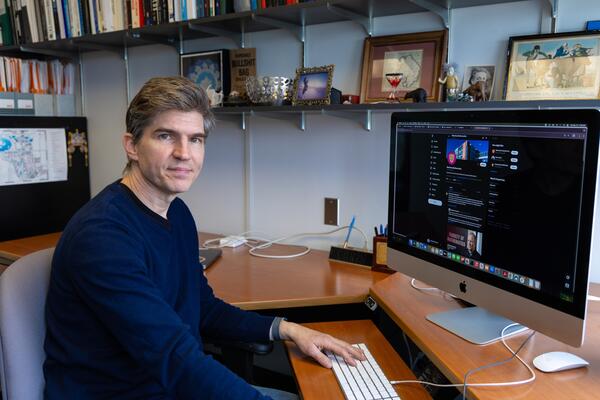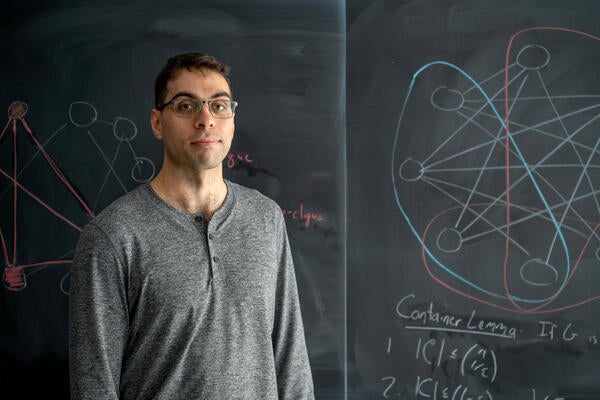
Becoming a world leader in cryptography
The University of Waterloo’s reputation as a global leader in cryptography can be traced back to a Second World War code-breaker.

The University of Waterloo’s reputation as a global leader in cryptography can be traced back to a Second World War code-breaker.
By Kaija Hutteri For Communications & Public Affairs Photo credit: David L. Hunsberger
Photo credit: David L. Hunsberger
William Tutte joined Waterloo in 1962, just a few years after the university opened. Although he specialized in graph theory, his contributions to the study of cryptography were substantial.
During the Second World War, Tutte determined the structure of the German encryption machines without ever having seen the equipment. This allowed Great Britain to decipher military transmissions throughout the remainder of the war.
His contributions to the University of Waterloo were also significant. Tutte helped establish the Faculty of Mathematics and was instrumental in defining Waterloo’s identity and reputation.
Tutte was instrumental in establishing the world’s only dedicated Department of Combinatorics and Optimization at Waterloo, which links cryptography researchers to those in related areas such as graph theory and algorithms. He received the Killam Prize, considered the Canadian equivalent of the Nobel, in 1982, and was inducted as an Officer in the Order of Canada in 2001.
Decades later, Waterloo remains at the forefront of cryptographic research. The MQV protocol, based on elliptic curve cryptography, was invented at Waterloo. Certicom, the company that popularized the use of elliptic curves in cryptography, was started by Waterloo’s Scott Vanstone, one of the minds behind the MQV protocol.
Cryptography uses mathematics to keep communications secure. Today that often means protecting emails and online transactions, but the study of cryptography existed long before the Internet age.
“It’s an ancient subject,” says David Jao, Waterloo professor and member of Waterloo’s Centre for Applied Cryptographic Research. “There’s always been a need for secure communication.”
As technology continues to evolve, researchers face new challenges in adapting cryptography software for new communication platforms.
Smartphones have presented their own set of challenges, according to Jao. They are portable, less powerful than personal computers, and always connected to the Internet. Cryptography software must be adapted with these considerations in mind.
Jao says the cryptography tools at our disposal are very good, but there is always room for improvement and the need for secure communication will persist.
“Cryptography is a really useful and important application of mathematics towards problems that are more and more important in the real world today.”

Dr. Chris Bauch, a professor of Applied Mathematics at the University of Waterloo, is part of a team that has developed a new approach to help public health officials predict where outbreaks might occur. (Elisabetta Paiano/University of Waterloo)
Read more
New research demonstrates that vaccine skepticism on social media can predict public health crises

Read more
From transforming solutions for homeownership to advancing health care interventions, Waterloo talent continues to disrupt industries and drive change

Read more
Waterloo researcher Cameron Seth is breaking down the world’s hardest computer science problem piece by piece
The University of Waterloo acknowledges that much of our work takes place on the traditional territory of the Neutral, Anishinaabeg, and Haudenosaunee peoples. Our main campus is situated on the Haldimand Tract, the land granted to the Six Nations that includes six miles on each side of the Grand River. Our active work toward reconciliation takes place across our campuses through research, learning, teaching, and community building, and is co-ordinated within the Office of Indigenous Relations.